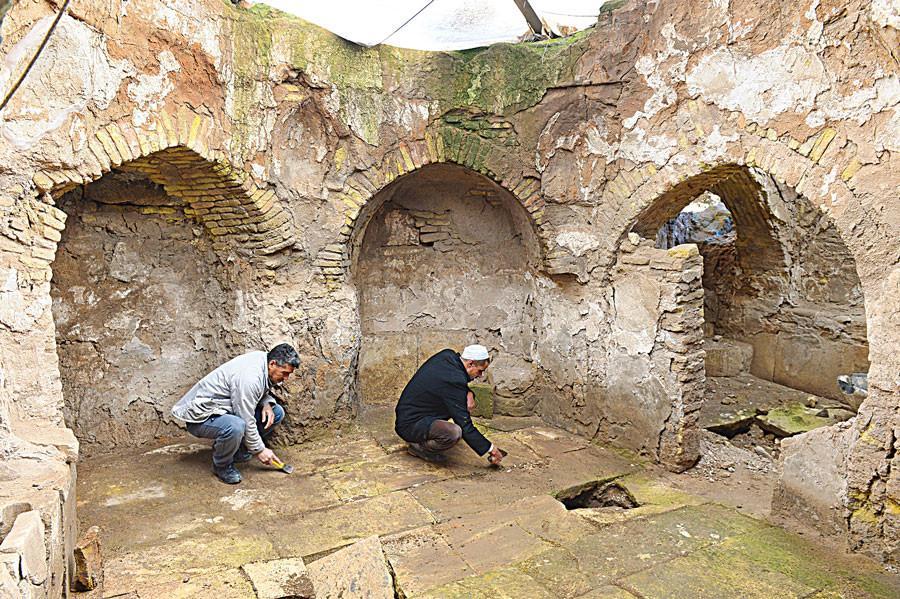
Excavations at the 9th century Harran Palace in the southeastern province of Şanlıurfa’s Harran district, one of the world’s oldest settlements and on the UNESCO’s World Heritage Temporary List, have revealed a bathhouse and its details.
In a statement, Mehmet Önal, an academic at Harran University’s archeology department and chair of Harran Ruins, said the excavations have been carried out in the historical palace for five years with the support of the Culture and Tourism Ministry and local authorities.
Önal stated that the works carried out in the historical region, which had been a permanent settlement for 6,000 years and was once a capital city of the Assyrians and the Omayyads, revealed a serious potential.
In the excavations carried out on the second floor of the Harran Palace, Önal said they unearthed a three-domed bath, and that the cold, warm and furnace sections of the bath were completely uncovered.
He said that the palace, which has never been visited so far, will be open to visitors next year.
“We also uncovered the place of a huge boiler in the bath. There is a metal boiler on top of the two-meter-high boiler. Cold and warm water pipes, which were connected to the metal boiler in the past, are still intact but the huge metal boiler was plundered during the Mongolian invasions. The pipes of the cold and warm water are clearly seen in the bath. During this year’s works, we succeeded to reveal even the finest details of palace bath. It is very important that the bath was unearthed with its intact vault,” he said.
Rare example from the Middle Age
Önal said the ruins in the palace also corroborate the possibility of finding more important artifacts. He said the palace was turned into a castle-like structure with polygonal towers.
“Harran Palace is one of the rare palace examples that have survived since the Middle Ages in Middle Eastern countries. Built in the Omayyad period, the three-story building has hundreds of rooms. Currently, we are working on the second floor. There are basaltic dog reliefs in the eastern gate of the palace, lion heads on the right and left of the main entrance, brick vaults, the intact towers and the palace bath can still be seen in the ruins,” he said.
Önal said that visitors are able to see the findings outside, adding, “We are working for visitors to visit this palace as soon as possible. It will be open as of the end of the next year.”
Önal also added that archaeological excavations in the ruins of the palace will last 10 years.